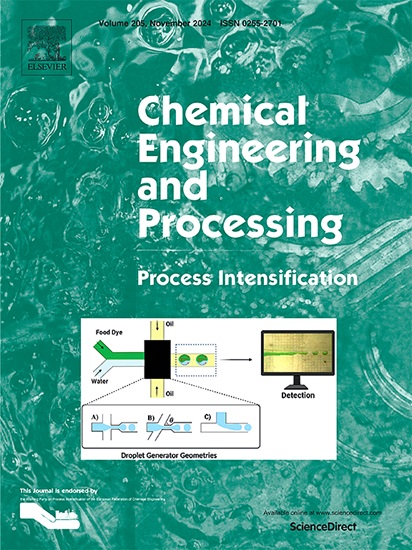Comparing a new semi-empirical mathematical model and a neural network for the description and forecasting of reversible fouling in membrane bioreactors
IF 3.8
3区 工程技术
Q3 ENERGY & FUELS
Chemical Engineering and Processing - Process Intensification
Pub Date : 2025-03-06
DOI:10.1016/j.cep.2025.110256
引用次数: 0
Abstract
This study compares the predictive capability of membrane fouling between a new semi-empirical mathematical model and a neural network. Calibration and validation involved 21 replicated flux-step experiments with 8 filtration fluxes ranging from 9.8 to 18.9 L/m²·h and 40-hour random-flux experiments conducted in an anaerobic membrane bioreactor. The inherent variability of reversible fouling linked to cake build-up was quantified.
In addition to cake build-up and compression, the mathematical model incorporates the restoration of residual fouling not removed by backwashing, including the rearrangement of non-detached particles and colloids, initial pore-blocking, and concentration polarization. The model predicts reversible fouling across a wide range of filtration fluxes, even beyond those used for calibration. Random-flux experiments revealed fouling trends undetectable via direct transmembrane pressure inspection. However, the mathematical model fails when the effective membrane area decreases during filtration.
The neural network predicts fouling patterns independently of underlying mechanisms, offering adaptability across a broader range of operating conditions. Nonetheless, it struggles to predict reversible fouling for flux ranges outside its training dataset, particularly at fluxes significantly higher or lower than those used in training.
The present study offers insight into reversible fouling description in order to enhance the performance of membrane bioreactors.

求助全文
约1分钟内获得全文
求助全文
来源期刊
CiteScore
7.80
自引率
9.30%
发文量
408
审稿时长
49 days
期刊介绍:
Chemical Engineering and Processing: Process Intensification is intended for practicing researchers in industry and academia, working in the field of Process Engineering and related to the subject of Process Intensification.Articles published in the Journal demonstrate how novel discoveries, developments and theories in the field of Process Engineering and in particular Process Intensification may be used for analysis and design of innovative equipment and processing methods with substantially improved sustainability, efficiency and environmental performance.

 求助内容:
求助内容: 应助结果提醒方式:
应助结果提醒方式:


